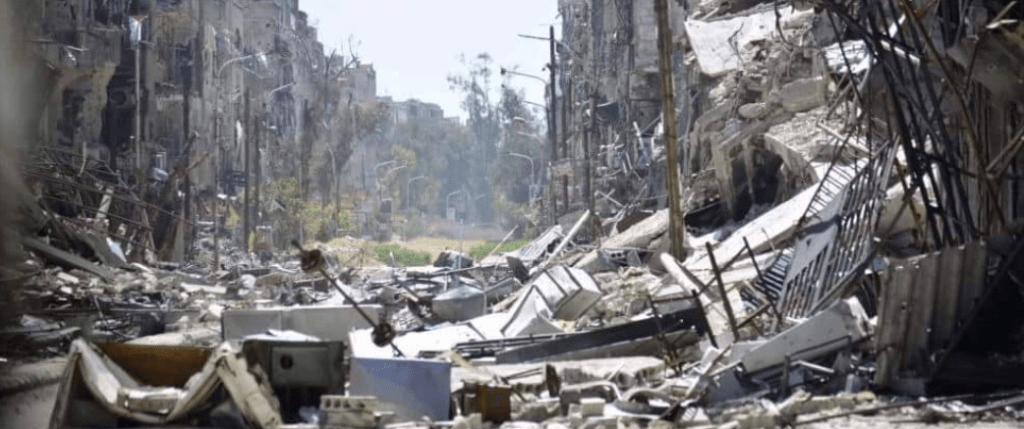The capital Damascus was shaken on Wednesday by successive blasts which hit towns south of the capital, al-Tadamon and Yarmouk camp.
The Sowt al-Asima website reported that 12 blasts occurred in the two areas, hitting a number of residential buildings.
The buildings hit by the blast had been struck by bombardment during military operations in the area in recent years, which led to major damage, and their partial collapse.
Machinery and diggers had began to remove what remained of the buildings immediately after the explosions, while trucks from government steel plants began transporting large volumes of steel from the destroyed buildings for re-manufacturing.
The al-Hajjar al-Aswid area, south of the capital Damascus, midway through last year saw successive blasts carried out by regime forces and intelligence agents in the area’s environs, with the Fourth Division working to demolish residential buildings in the Yarmouk area in order to remove them completely. They had been completely free of tunnels, explosives and war detritus, which indicates that the blasts were done intentionally for the purpose of destroying buildings and houses, while regime fighters carrying out the blasts say that the area will be subject to a complete reconstruction, using these claims to justify the actions to the residents.
Syrian investors backed by Iranian and Russian agencies concluded a preliminary agreement stipulating the division of contracts in the Hajjar al-Aswid area south of Damascus as part of a plan to rebuild it. The Iranian-backed investors have taken electricity, energy, and sanitation contracts, while those backed by Russia have taken over the rehabilitation of the phone and water networks and removing rubble in coordinations with the Fourth Division and local businessmen. The compensation received by the Russians and Iranians was not revealed.
Fourth Division workshops specialized in removal entered Street 30, where they gathered tons of steel and aluminum in preparation to transport them to the factory of businessman Mohamed Hamsho, the primary figure responsible for the removal of rubble in the destroyed areas of the Damascus countryside.
This article was translated and edited by The Syrian Observer. The Syrian Observer has not verified the content of this story. Responsibility for the information and views set out in this article lies entirely with the author.


